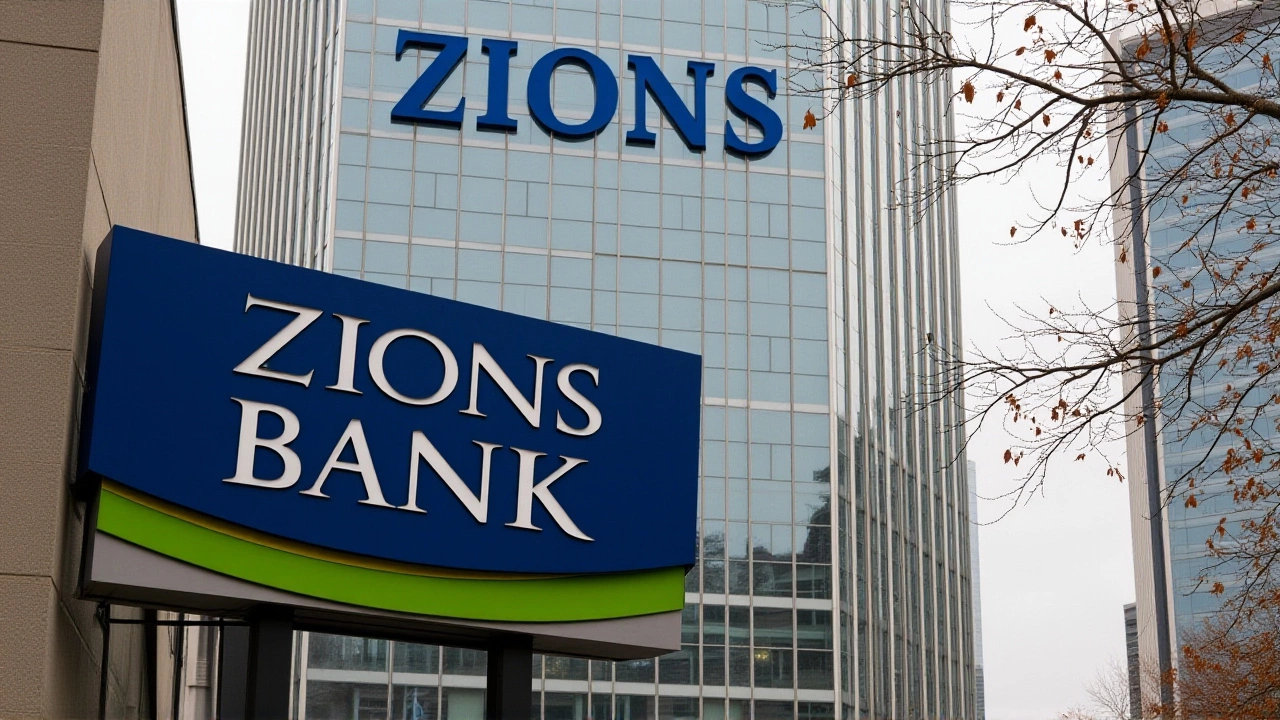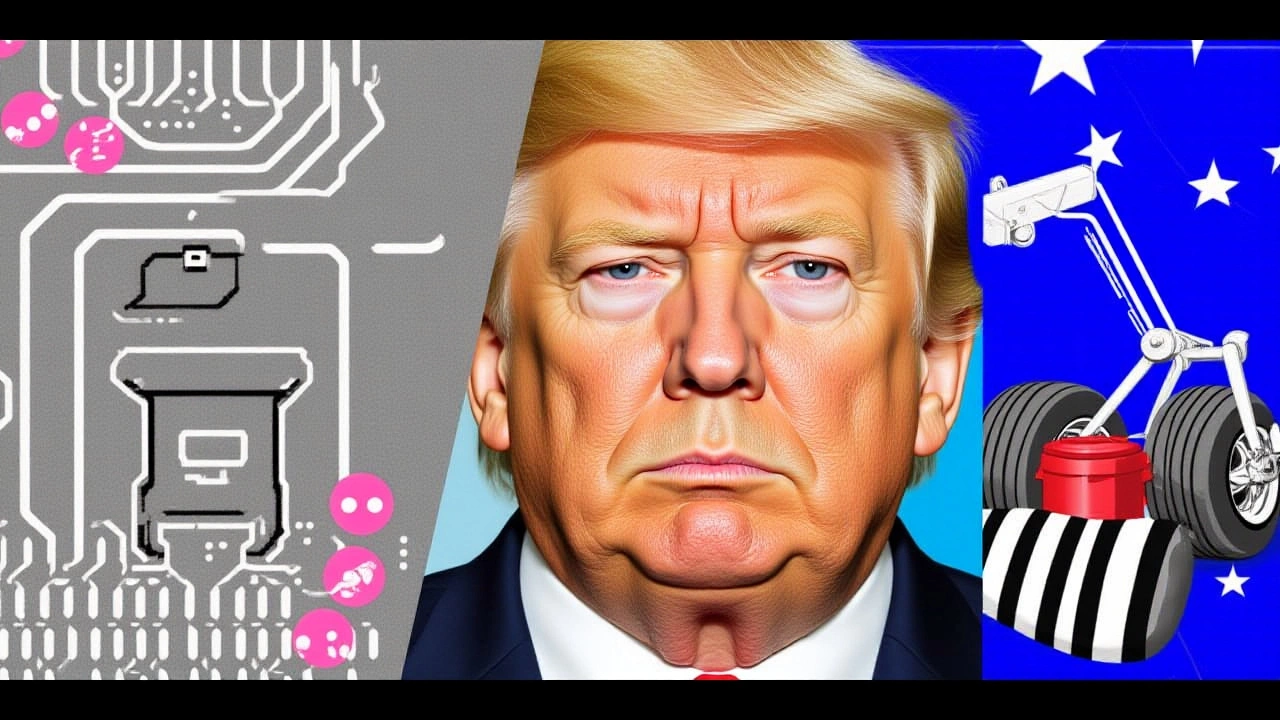US stocks took a nosedive this week, shedding roughly 2‑3% across the board after the White House rolled out a fresh tariff on Chinese imports on Friday, October 17, 2025. The slide erased record‑high gains recorded earlier in the week and marked the steepest single‑day drop since April 2025. Meanwhile, a partial federal shutdown entered its sixth day, adding a political backdrop to the market turmoil.
When S&P 500 Index closed the week down 2.41%, Nasdaq Composite Index fell 2.53%, and the Dow Jones Industrial Average slipped 2.70%, investors were left scrambling to reassess risk. The international MSCI EAFE Index also trended lower, down 1.85% as global sentiment cooled.
Early‑Week Optimism Amid a Shutdown
Monday, October 13, 2025, looked oddly hopeful. Even as the federal government’s funding lapse entered its sixth day, both the S&P 500 Index and the Nasdaq Composite Index edged to record closing highs. The rally was largely fueled by speculation around two high‑profile merger deals that analysts said could reshape the tech‑hardware landscape. No company names were disclosed, but the buzz was enough to lift sentiment.
In contrast, the Dow Jones Industrial Average dipped slightly, underscoring how different sectors were reacting to the same political environment. Traders noted that industrials were more sensitive to the looming shutdown, while tech‑heavy indices rode the merger hype.
Fed Minutes Reveal a Split on Rates
Midweek, the Federal Reserve released the minutes from its September 2025 policy meeting. The document showed "somewhat divided opinions on interest rates" among the Fed’s policymakers. While some members advocated for a rate hike to curb inflation, others warned that the economy’s still‑fragile rebound could be jeopardized.
John Doe, senior market analyst at BNY Mellon, observed, "The mixed signals from the Fed gave investors a brief window to stay bullish, especially after the merger chatter. But the lack of consensus also meant the floor was ready to crack if any negative catalyst hit."
Tariff Announcement Sparks a Rapid Sell‑off
At roughly 10:15 a.m. ET on Friday, October 17, 2025, White House officials announced an additional tariff of up to 25% on a basket of goods imported from the People's Republic of China. The move was framed as a response to what Washington called "unfair trade practices" and an effort to protect domestic manufacturers.
Within an hour, semiconductor shares tumbled, dragging the broader market down. The S&P 500 Index erased its earlier gains, closing the day down 2.41% for the week. The Nasdaq Composite Index followed suit with a 2.53% weekly decline, while the Dow Jones Industrial Average slipped 2.70%.
Emily Rivera, chief economist at the Economic Policy Institute, warned, "A tariff escalation at this juncture reignites trade anxieties that have already been simmering. The immediate market reaction is sharp, but the longer‑term drag on investment could be more pronounced if the policy remains in place."

Broader Implications for Trade and the Economy
The tariff surge adds a new layer to the already tense U.S.–China trade relationship, which has seen periodic disputes over technology, intellectual property, and market access. Analysts suggest that the latest move could prompt retaliatory measures from Beijing, potentially affecting agricultural exports and consumer goods that flow back to the United States.
On the macro side, the combination of a partial government shutdown, divided Fed outlook, and heightened trade friction creates a "perfect storm" scenario for policymakers. The Treasury Department is reportedly reviewing the impact on the federal budget, while congressional leaders continue to negotiate a funding solution.
What’s Next? Monitoring the Fallout
Investors will be watching three fronts over the coming weeks:
- Trade negotiations: Whether Beijing files a WTO complaint or introduces counter‑tariffs.
- Policy response: Potential easing of the tariff if market backlash intensifies.
- Government funding: A resolution to the shutdown could restore confidence in fiscal stability.
Meanwhile, the market’s technicals suggest that support levels for the major indices now sit near the 4,400 mark for the S&P 500 and 14,200 for the Nasdaq. Crossing below those thresholds could trigger further downside, especially if earnings season reveals weaker corporate performance.

Historical Context: Trade Tensions and Market Volatility
Back in 2018, the U.S. imposed a series of tariffs on steel, aluminum, and a range of Chinese goods, prompting a sharp correction in tech stocks. That episode saw the S&P 500 lose about 6% in a single month, a pattern eerily reminiscent of today’s 2‑3% weekly dip. History suggests that while markets can absorb short‑term shocks, prolonged trade wars tend to erode profit margins and dampen capital spending.
Frequently Asked Questions
How will the new tariff affect technology companies?
The tariff targets a broad set of electronic components imported from China, raising costs for U.S. chip makers and downstream firms. Analysts estimate a 1.5‑2% increase in production expenses, which could shave margins and push some companies to reconsider supply‑chain diversification.
What does the partial government shutdown mean for the markets?
A shutdown means many non‑essential federal employees are furloughed, slowing government services and potentially delaying economic data releases. The uncertainty adds a risk premium, keeping investors wary even when corporate earnings look strong.
Could the Fed change its stance after the market drop?
While the Fed’s September minutes already hinted at a split view, a sharp market correction could tip the balance toward a more dovish approach. Some policymakers may argue for keeping rates steady to avoid further destabilizing equities.
Will China retaliate, and how might that impact U.S. investors?
Historically, Beijing has responded with counter‑tariffs on U.S. agricultural products and automobiles. If similar measures are taken, American exporters could see reduced demand, while import‑dependent sectors might face higher prices, creating a ripple effect across the broader economy.
What are analysts predicting for the rest of 2025?
Most forecasts now expect a modest 1‑2% quarterly growth in the S&P 500, down from the previously projected 3‑4% range. The outlook hinges on whether trade talks de‑escalate and if the shutdown is resolved before year‑end.



